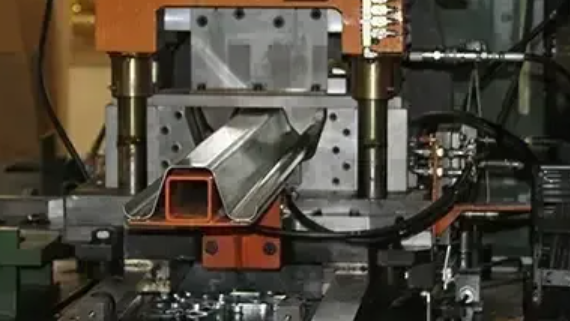Lubricants play a vital role in ensuring smooth, efficient operation and extending the lifespan of roll forming equipment. The choice of lubricant depends on several factors, including the material being formed, the machine’s operating conditions, and the specific roll forming process.
- Mineral-Based Oils
Mineral oils are widely used in roll forming due to their excellent lubrication properties and cost-effectiveness. These oils provide a high level of protection against wear and tear, reduce friction, and dissipate heat, making them ideal for high-speed operations. They are often applied to both the material being formed and the tooling components. - Synthetic Lubricants
Synthetic lubricants are engineered to offer superior performance in extreme conditions, such as high temperatures and heavy loads. They provide better oxidation stability, which means they last longer than mineral oils. Synthetic lubricants also offer better protection against corrosion and wear, making them suitable for long-term use in demanding roll forming environments. - Water-Based Lubricants
Water-based lubricants are used when it's essential to avoid oil residue on finished parts. These lubricants are diluted with water, offering cooling properties while reducing friction. They are often chosen for forming non-ferrous metals such as aluminum, where keeping the material clean is critical. However, water-based lubricants need to be carefully monitored to prevent rust or corrosion on steel components. - Semi-Synthetic Lubricants
Semi-synthetic lubricants are a blend of synthetic and mineral oils, offering a balance between cost and performance. They provide better cooling and protection compared to pure mineral oils, making them suitable for high-temperature and high-speed roll forming operations. - Greases
Greases are commonly used for lubricating the machine's bearings, gears, and other mechanical components that experience low-speed, high-pressure conditions. They provide excellent protection against wear and corrosion and are especially useful for preventing metal-to-metal contact in critical areas. - Dry Film Lubricants
Dry film lubricants, such as PTFE (Teflon) or graphite-based coatings, are used in applications where minimal lubrication is needed, or where liquid lubricants may contaminate the material being formed. These lubricants reduce friction without attracting dirt or debris, making them ideal for cleanroom environments or forming delicate materials. - Cutting Fluids
Cutting fluids, often oil-based or water-soluble, are used in roll forming applications where material cutting is integrated into the process. They help to cool and lubricate the cutting tools, extending their life and ensuring clean cuts on the material.
Choosing the Right Lubricant
When selecting a lubricant for roll forming equipment, consider the following factors:
- Material Compatibility: Ensure the lubricant is compatible with the metal being formed (steel, aluminum, copper, etc.).
- Operating Conditions: High temperatures, speeds, or loads may require more specialized lubricants.
- Surface Finish: If a clean surface finish is critical, opt for water-based or dry film lubricants.
- Environmental Concerns: Consider the environmental impact and disposal requirements of the lubricant.
Proper lubrication is key to preventing downtime, reducing wear on tooling, and maintaining high-quality output in roll forming operations.




